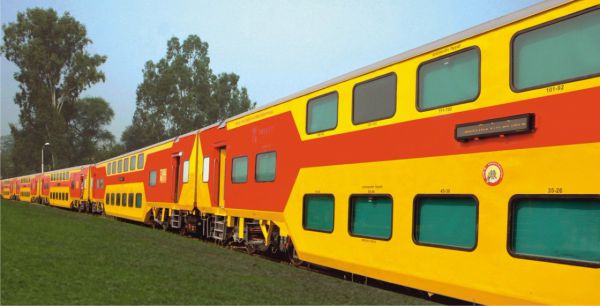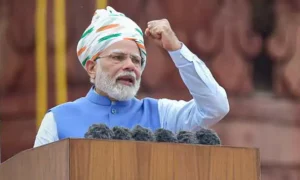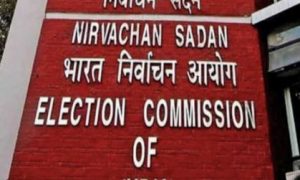Indian Railways is working on Rs 25,000 crore projects for the redevelopment of 123 railway stations across the country on a self-sustainable model. In an interview with Financial Express Online’s Smriti Jain, Ved Parkash Dudeja, Vice Chairman of Rail Land Development Authority (RLDA) talks about the various railway station redevelopment projects like New Delhi and how the aim is to meet the cost of re-development by leveraging commercial development of spare railway land/airspace. Edited excerpts:
What are the major railway station redevelopment projects that RLDA is working on?
RLDA has been entrusted with the re-development of 62 railway stations across India at present on a self-sustainable model in sync with the smart city projects. In addition, IRSDC is developing 61 stations. We plan to redevelop the railway stations with modern amenities and state-of-the-art facilities which will enhance passenger experience. Most of these stations will be developed on PPP model.
The cost of re-development will be met primarily by leveraging commercial development of spare railway land/airspace in and around the station. It will put the vacant land to better use and will attempt to redefine passenger experience, in addition to generation of non-tariff revenue for Indian Railways. The program will also give a fillip to infrastructural and commercial development in city centres. The total concession period is 60 years including the construction period. In the case of residential development, the lease period shall be 99 years.
RLDA has already initiated action on many stations. For example, the railway station at Gomti Nagar, Lucknow is being developed in collaboration with National Buildings Construction Corporation (NBCC) under the EPC model. Tenders have been invited for re-development of Safdarjung Railway Station in New Delhi and Ajni Junction at Nagpur also on EPC mode. RFQs for Nellore, Tirupati, Dehradun & Pondicherry Railway stations have already been finalised for the redevelopment of these stations on PPP mode. RFQs for New Delhi has also been invited.
The other major railway stations in the pipeline for the year are Charbagh (Lucknow), Ernakulam Jn, Faridabad, Kanyakumari, Rameswaram, Madurai, Kozhikode, Tambaram, Delhi Cantt, Jammu, Panipat, Bhuj, Puri, Vijayawada, Vishakhapatnam, Renigunta, etc.
What are the expected overall costs of these projects and the timelines?
Station redevelopment is being planned through various business models such as PPP, Joint development with state/PSUs, PPP+EPC, EPC funded through loan/debt to be repaid from commercial development etc., by leveraging commercial potential of spare railway land & airspace in and around the station. MoR will not incur any expenditure on station development program. This program will help generating additional revenue. At the very least, some of the stations may end up being cost-neutral for the railways. This model envisages bringing together the relative strengths of private players with those of the Government. Innovation and capital investment of the private players will be combined with strategically located land of stations along with guaranteed footfall to create value for the customers.
Station redevelopment program has two components, namely station development and station estate development.
Station development is the core area, where a conceptual design based on Safety, Service level etc., is indicated. Station design is based on standard and modular/prefabricated construction design principle, which can be scalable.
Station estate development, on the other hand, is the non-core area, where Concessionaire may choose the product mix (i.e. Commercial, Hospitality, Office space, Multiplex, Hospitals etc.) as per their own assessment of market demand & bring in private sector efficiency & innovation.
Railways expect an investment of about Rs 25000 crore on these 123 stations planned by RLDA and IRSDC. For this magnitude of investment, the selected concessionaires may adopt any financial model of their choice for arranging funds as per their own assessment.
How does the RLDA plan to make commercial use of railway land? What are the projects lined up in this regard?
RLDA is entrusted with the development of four kinds of projects- commercial development, railway station re-development, colony re-development, and Multi-Functional Complexes (MFCs). The commercial sites are spread across India and have a potential of Rs 7500 crore.
Developers have been fixed for 24 sites entrusted to RLDA for commercial development. Bids for 23 sites are planned to be invited in 2020-21. Prominent sites like Mahalaxmi (Mumbai), Salt Golah (Howrah), Shakur Basti (New Delhi), Victoria Crescent (Chennai), MTS Colony (Hubli), Lancer Lines (Hyderabad), Udaipur, etc. are lined up for bidding out during the year.
Other than the larger commercial sites, 58 multifunctional complexes (MFCs) have been leased out for a lease period of 45 years to various developers PAN India with 13 MFCs having been commissioned and the rest in various phases of construction. The MFCs are positioned within the circulating area of the railway stations near station buildings. These MFCs will command high footfall including passengers as captive customers since they will provide enhanced passenger amenities for the public under one roof, within walking distance of railway platforms. The complex may have a budget hotel, lodging and boarding arrangements, restaurants, and shops. Clearances are not required from local authorities for development of MFCs since they function as operational buildings of the railways.
Tell us about the New Delhi railway station redevelopment project? By when do you hope to award it?
Ministry of Railways envisions to redevelop New Delhi Railway Station (NDLS) and equip it with state-of-the-art amenities in line with global standards. The goal is to improve the infrastructure to provide efficient movement of traffic and pedestrians to and from NDLS, and develop NDLS into an integrated development with commercial, retail and hospitality components in the heart of the national capital.
The area will comprise a mix of retail spaces, hotels, and offices. Separate entry and exit points, elevated concourse, multi-level car parking, food courts, lounges and restrooms will be some of the key features of the proposed project. The capital expenditure for the whole project is estimated at around Rs 6,500 crore of which roughly Rs 5,000 crore is expected to be incurred on the station redevelopment and associated components. This is going to be a landmark project for the capital of our nation.
Requests for Qualification (RFQ) have already been invited and the project would be given out on a Design Build Finance Operate Transfer (DBFOT) basis for a concession period of 60 years to a private developer, which would be selected via a competitive bid process.
The project is expected to be completed within four years.
Tell us about the proposed redevelopment of the Civil Lines railway colony in Delhi. Are more such projects on the cards?
RLDA will redevelop a railway colony at Boulevard Road, adjacent to Tis Hazari Metro station near Rajpur Road in North Delhi. The site spans 5.39 acres and will be developed as a residential project. The proposed upscale residential development is envisioned as a self-sufficient neighbourhood endowed with state-of-the-art amenities. Its strategic location and excellent connectivity to Tis Hazari metro station, ISBT Kashmere Gate, North Campus and Vidhan Sabha will make it a preferred destination for homeowners.
Its location in the bungalow zone will foster elite development with high end villas, bungalows and plotted residential development. Exclusive commercial development is also proposed on the site facing the busy Lala Hardev Sahai Marg.
The redevelopment is planned around the concept of Biophilic urbanism, which is emerging as an important design principle for cities, featuring a suite of natural design features that address multiple pressures related to climate change, increasing urban populations, finite resources and our inherent need for contact with nature. The principle directs the creation of urban environments that are conducive to life, delivering a range of benefits to stakeholders including building owners, occupiers, and the surrounding community.
Like Boulevard Road, 84 railway colonies redevelopment projects at enviable locations all over the country are entrusted to RLDA at present targeting an approximate gross revenue potential of Rs 4500 crore. Recently, one project for re-development of a colony at Guwahati has been awarded. Bids for Chilkalguda & Rifle range Colonies in Hyderabad have been invited and RLDA is expecting good response from the south. Other colonies in the pipeline are at Bandra (West), Santacruz, Khar at Mumbai, Varanasi, Gorakhpur, Bareilley, Tilak Bridge and Lodhi colony at New Delhi, Patna, Ludhiana, Vijayawada, Lucknow, Mangalore, Rajkot, Bhavnagar, Pune, Hubli etc.
Railway Colonies will be developed by efficient utilization of FSI/FAR, thus creating Railway Colony in one pocket of land without any cost to Railways and freeing the rest of the land for monetization which can be leased out to a potential developer. Prospective bidders may get prime land in the heart of cities for commercial development for this.
What other projects is RLDA working on in this financial year?
RLDA is aiming to issue tenders worth Rs 15,000 crore in FY 2020-21 against Rs 3,500 crore in the previous year. The river-front location of Salt Golah in Kolkata, which used to be the offices and residence of the Salt Commissioner during British times, although a wondrous site, is presently full of dilapidated buildings. RLDA plans to create a multitude of possibilities of modern tourism. The 15m wide strip can be utilized for developing water sports. Also, the riverfront can be used for commercial ferrying activities.
The stations of Kanyakumari, Rameswaram, Madurai, Kozhikode, along with Tirupati and Puri have limitless potential of creating a temple circuit along the panoramic south coast of the country.



































